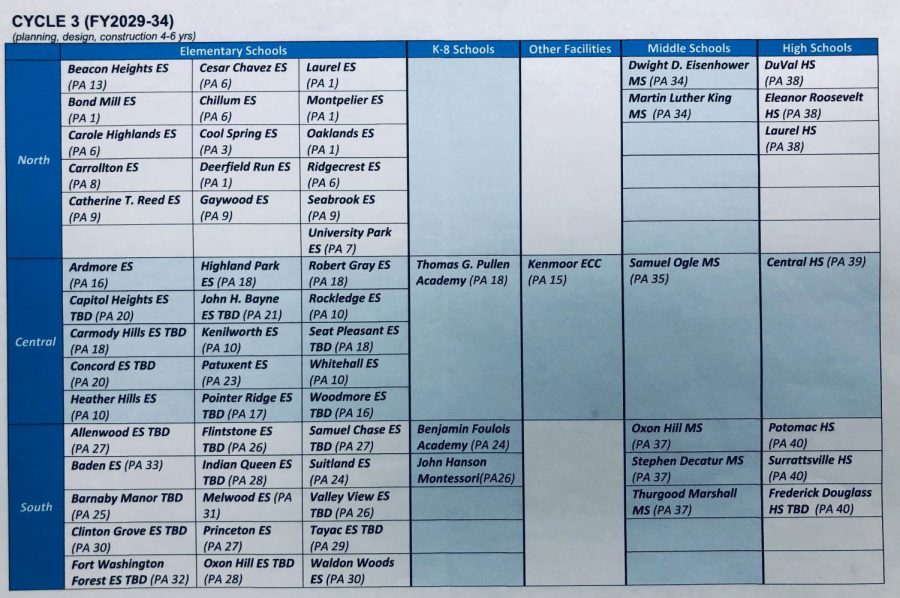Get Ready Roosevelt, the Temps (Ar)e gone!
Copy of the PGCPS Educational Facilities Master Plan
December 9, 2019
Eleanor Roosevelt is often considered one of the best public schools in Prince George’s County, due to its esteemed Science and Technology program. Our school offers an array of Advanced Placement and other college-level courses centered around all aspects of science, math, engineering, and technology. However, several of our classrooms do not reflect the quality of our teachers and the rigor of STEM curriculums, due to the reality that much of the lab equipment within them hasn’t been modernized since 1976.
Jody Beth McCain, a concerned parent with a background in public planning, has spoken to Mr. McNeil about creating a new science wing that could address this problem, and could potentially replace the temporaries. She received this idea while investigating some research, trying to find the estimated time until Roosevelt would receive such renovations. On the county-mandated schedule, which is organized in cycles, she discovered that Eleanor Roosevelt is listed on cycle three, and each cycle is four to six years long. This means that in the best-case scenario, Eleanor Roosevelt might be receiving renovations in 2029. What does this mean? The next decade of Roosevelt students are going to have to face all the problems we currently do, and more.
Mrs. McCain said she felt that the “teaching environment was just as important as the teachers and instruction”, and decided to do what she could to speed up the process.
After getting the approval of the PTSA president, Mrs. McCain found a non-profit called the Neighborhood Design Center that agreed to take on the project. Their goal, during the nine-month conceptual design process, is to update the science labs and take down the temporariess一in addition to creating an extended science wing, similar to where many of the
history classes are, to provide space for other science classes. According to Mrs. McCain, the Neighborhood Design Center is planning on asking Eleanor Roosevelt architectural drafting students to be a part of the design process. They also plan on attaining general student, faculty and Greenbelt community input, which might address problems that might not be so obvious on the outside.
These renovations pose a glimmer of hope for teachers who have invested greatly in their students and school and wish to be more hands-on in their teaching methods but are wary of doing so due to lack of proper safety equipment. Ms. Rebecca Hammonds confirms that “some of the old classrooms…don’t have built-in safety showers or eyewash stations. For some of the chemistry classrooms, I know they don’t have fume hoods that work properly.”
She also voiced her support for the renovation on a much larger scale. She explains that she “thinks it will be great and would allow [the school] to possibly get rid of the temporaries.” She adds that “these classrooms are really great rooms if you don’t need the extra science part of it, they’re really big rooms so I think that it would allow people to not have to float.” In essence, teachers would be able to commit to one room and conduct all their classes without the inconvenience of moving, as well as just providing extra space for more students.
Though the conceptual design will probably not be completed for another year, individuals such as students, faculty members, and Greenbelt stakeholders alike will have a new and improved STEM extension to look forward to一as well as knowing that ERHS students will have the benefit of up-to-date safety equipment in the case of learning being too fun.





Cora • Jan 21, 2020 at 4:03 pm
I think that updating equipment is great, but if this will separate S/T kids even more from the other students at Roosevelt it may do more harm than good.